Robert Rauschenberg's triumphant survey at Tate Modern, goat included
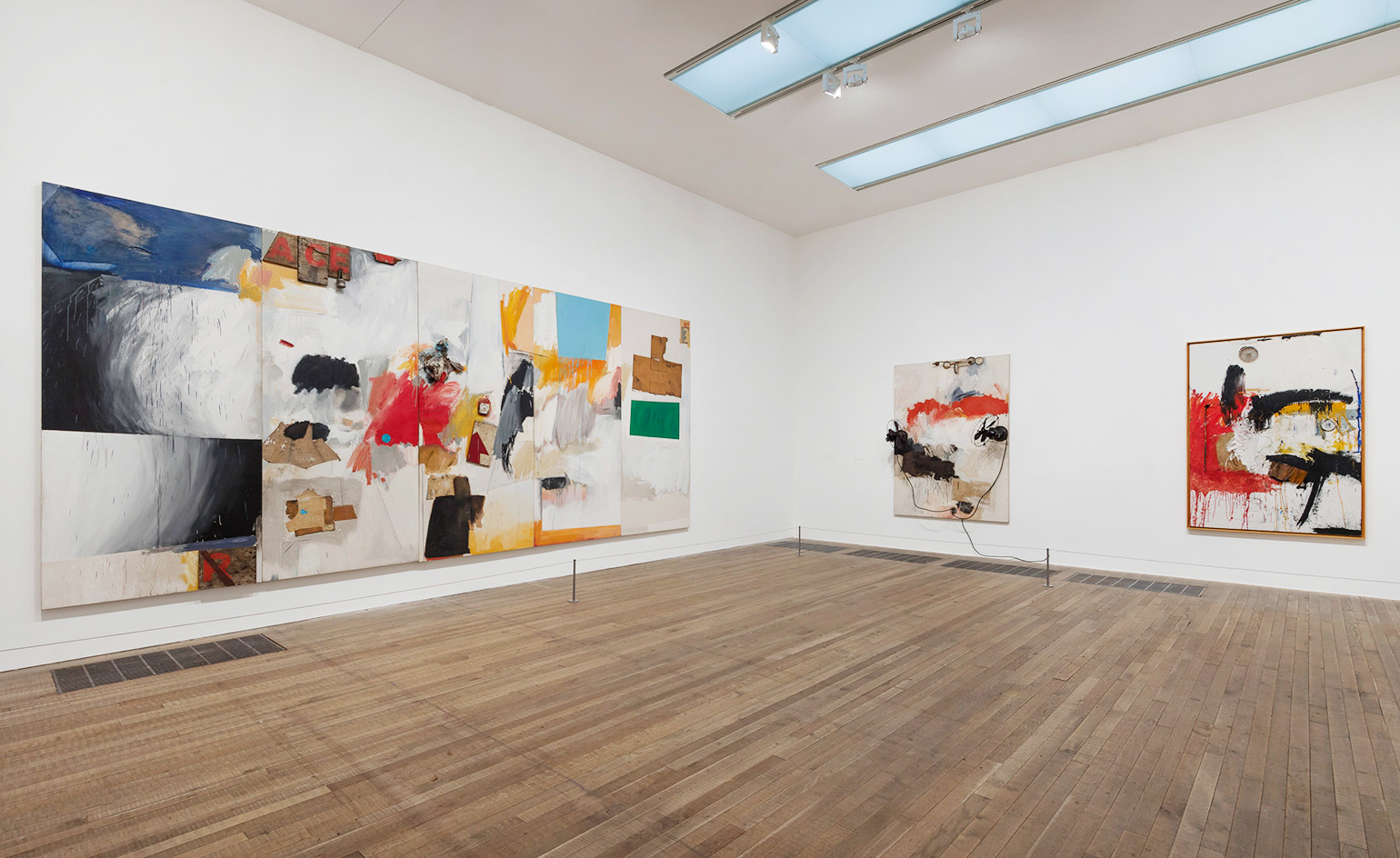
There was much art-world hype earlier in the year about Robert Rauschenberg's famously fragile Monogram goat travelling to London for the first time in two decades. It was posited as a lynchpin in Tate Modern's anticipated Rauschenberg retrospective – another UK first since the great American artist passed away in 2008.
Kneeling down next to the beast, looking into Monogram's glassy eyes, he was worth the 20-year wait. There's humorous absurdity in his vacant expression, his chin hairs matted in a rainbow seal of oil paint. But there's also something mournful. He's suspended in a ridiculous tyre belt, to be ogled by visitors. Monogram began life as a $15 stuffed animal at a used furniture store. Since then, he's had quite the life. Like many of the artist's renowned Combines, Monogram developed various appendages over a number of years. At one stage, he was mounted on a vertical canvas before being slotted inside the rubber tyre for which he's now known. As Rauschenberg said, the tyre and the goat 'lived happily ever after'.
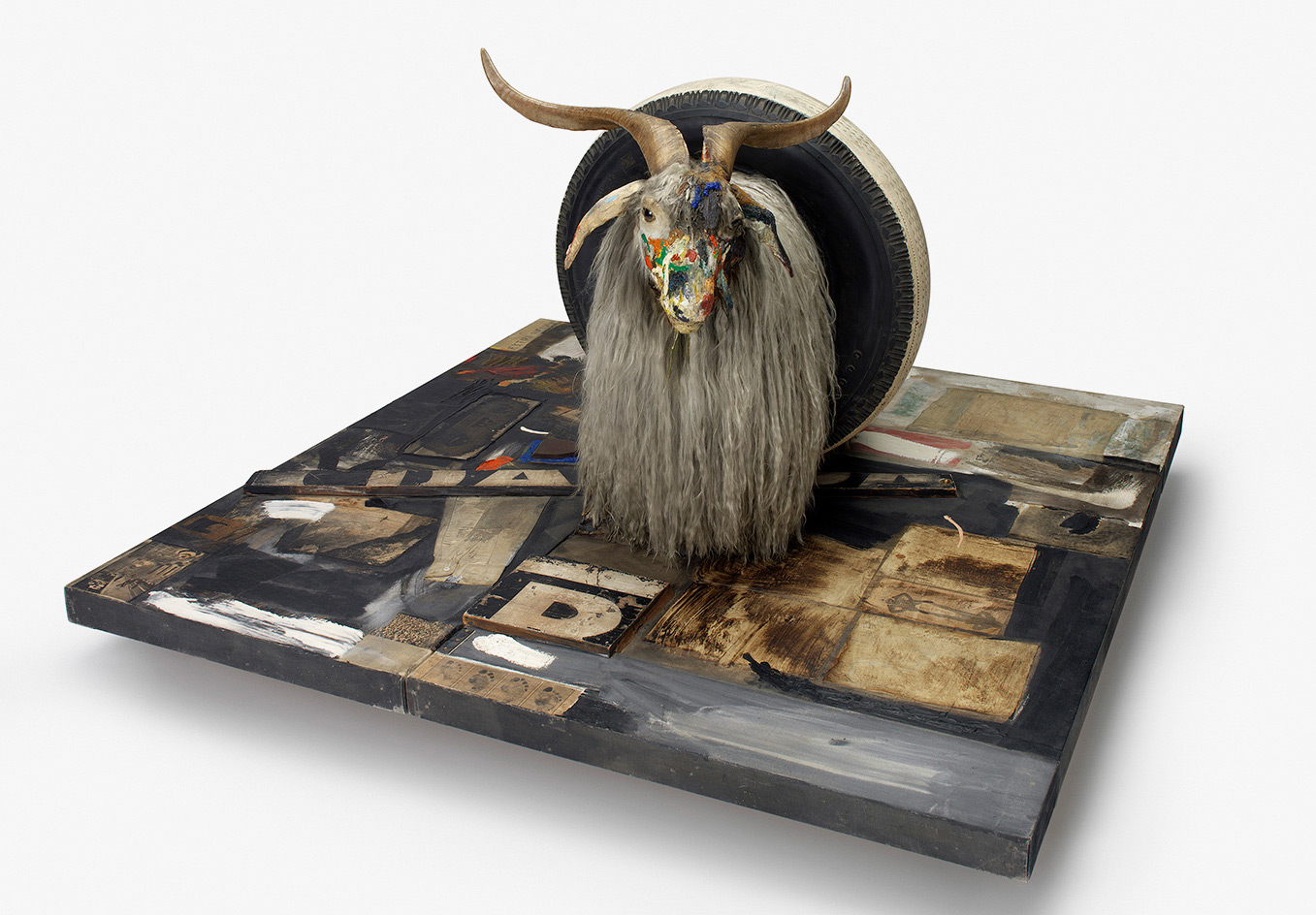
'Monogram', 1955–59. Purchased 1965 with contribution from The Friends of Moderna Museet, Moderna Museet, Stockholm. © Robert Rauschenberg Foundation, New York
A little like his Combines, Rauschenberg was continually adding appendages and arms to his practice, driven by an insatiable curiosity with materials. Each chapter of his six-decade career (including his silkscreen period, live performances, technology and material abstraction) has a dedicated room in the exhibition. This change of mediums and methods mirrors the artist's moving physical locations. He toured, holidayed and journeyed extensively – most famously to Cuba, Spain, Italy and Morocco with Cy Twombly in the 1950s. As Tate's director of exhibitions Achim Borchardt-Hume says, 'he saw the experience of art as inseparable from the experience of life'.

The exhibition starts with Rauschenberg's early experiments at Black Mountain College, in a room overwhelmed by monochrome. It's as if colour couldn't be introduced yet, because Rauschenberg was too preoccupied by texture. These early works have a simplicity, an air of cool and a material playfulness that lay the foundations for his future work. A renowned early collaboration with John Cage, Automobile Tyre Print (1953) hints at what's to come from Rauschenberg's performative work. Here, Rauschenberg laid page upon page of typewriter paper on a driveway, and asked Cage to run over them in his car, with ink on the wheel. As Rauschenberg said at the time, Cage was 'both the printer and the press'.
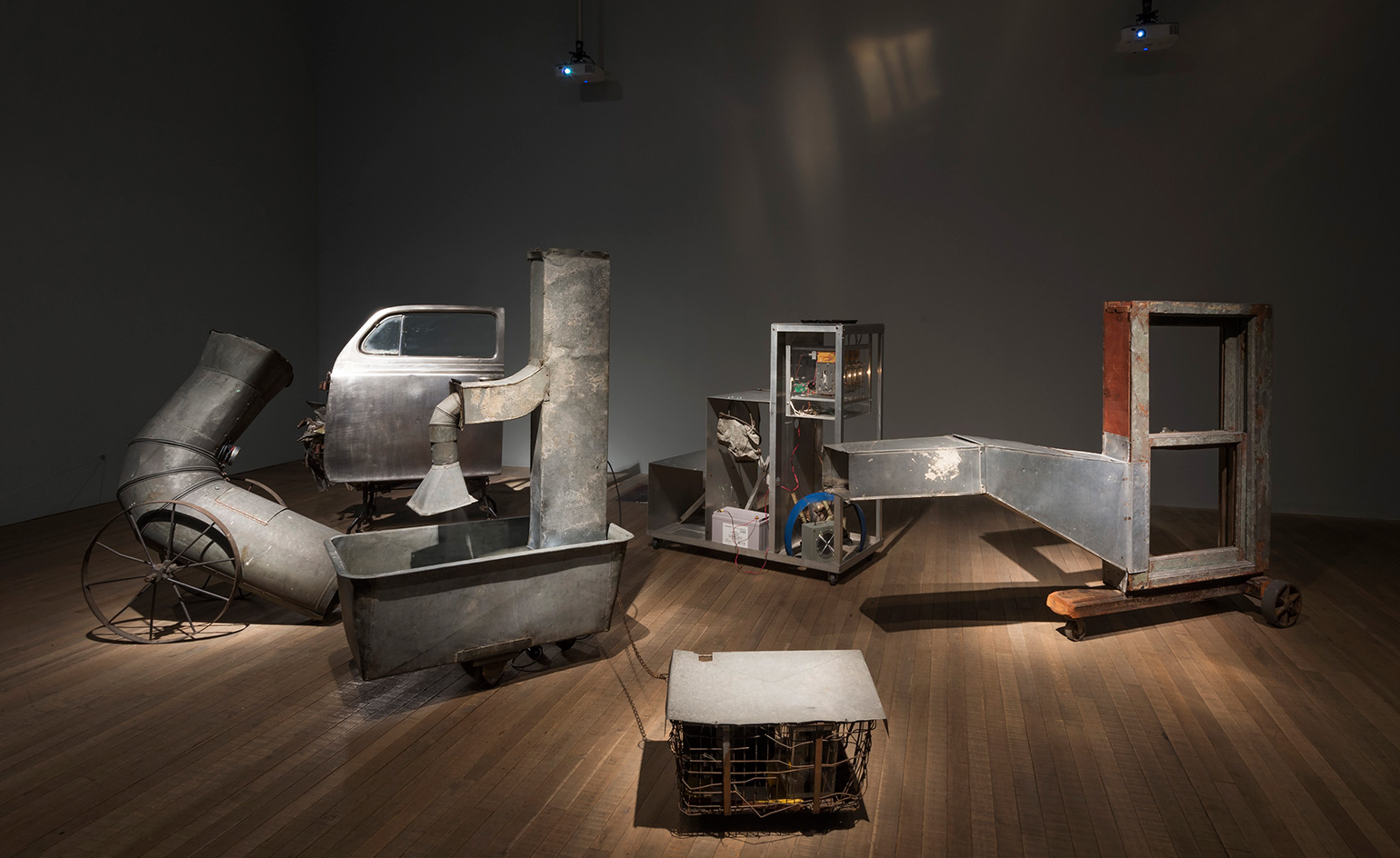
'Oracle', 1952–55.
The idea of repurposing and using objects that are already lying around (as seen in this early use of a car and typewriter paper) went on to define Rauschenberg's practice, and help redefine the landscape of American art. Rauschenberg used the objects of life: boots, paint pot lids, desk fans and, perhaps most importantly, newspaper clippings. He embedded a radio into one of his Combines, with the dials still showing, so that visitors could choose the station. In this sense, the audience – the users of these essential life objects – was as much a part of his work as the materials were.
Rauschenberg's choreographic pieces (here represented by a host of archival material, photographs, projections and film) grew in direct relation to his sculptures and paintings. Though static, his silkscreens have the same energy and life that his dances do; framed against a wall, his later fabric swathes ripple like flags when a visitor walks by too closely.
Despite the vast spectrum of the artist's work, each phase bares his distinct signature. What this exhibition does so cleverly is to simply allow this genius to unfold. Chronologically, without fuss, or unnecessary embellishment, the Tate has allowed Rauschenberg's work to speak for itself. Any art world hype is wholeheartedly justified.

Rauschenberg's silkscreens used images found in newspapers and magazines of the 1960s.
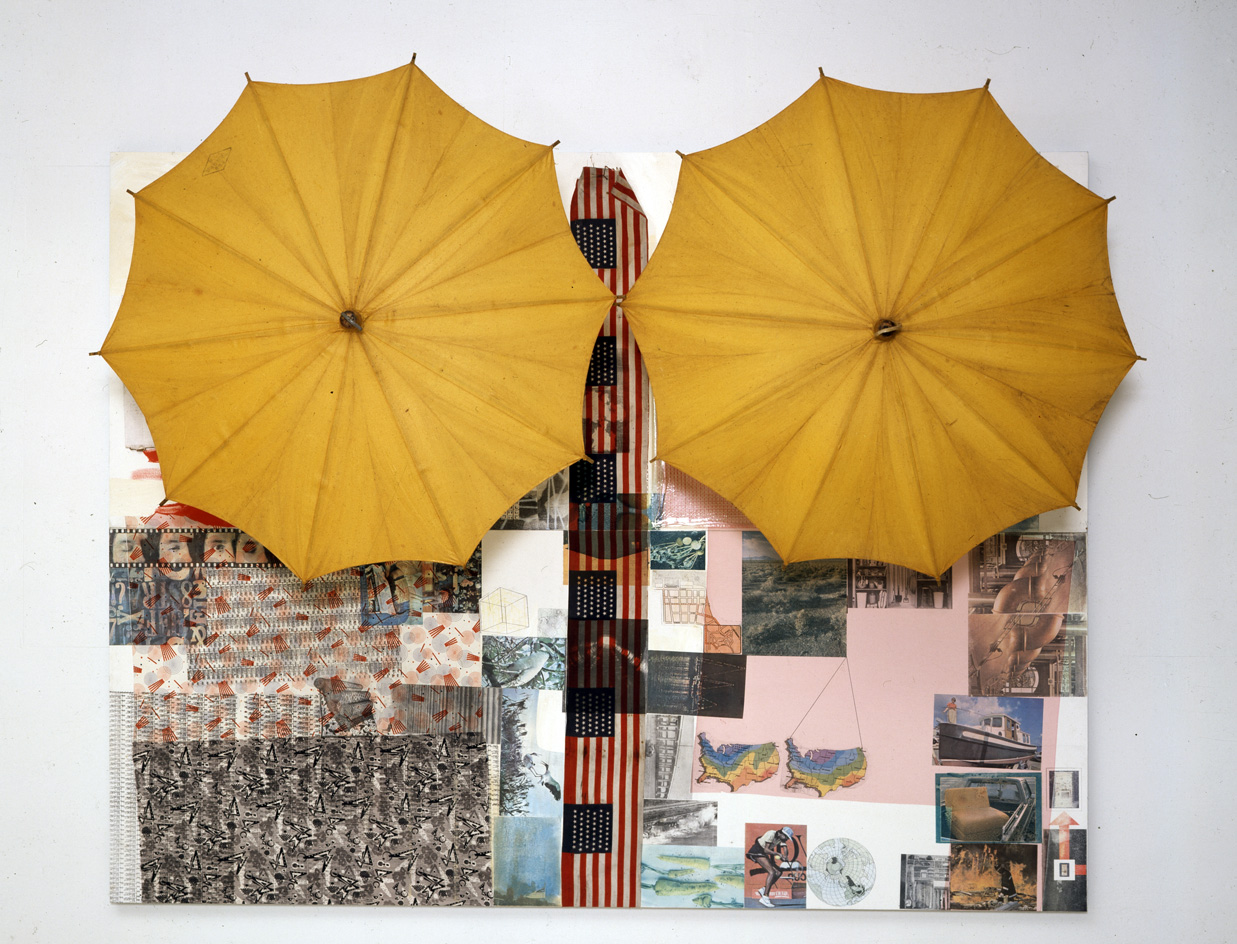
Untitled (Spread), 1983. © Robert Rauschenberg Foundation, New York
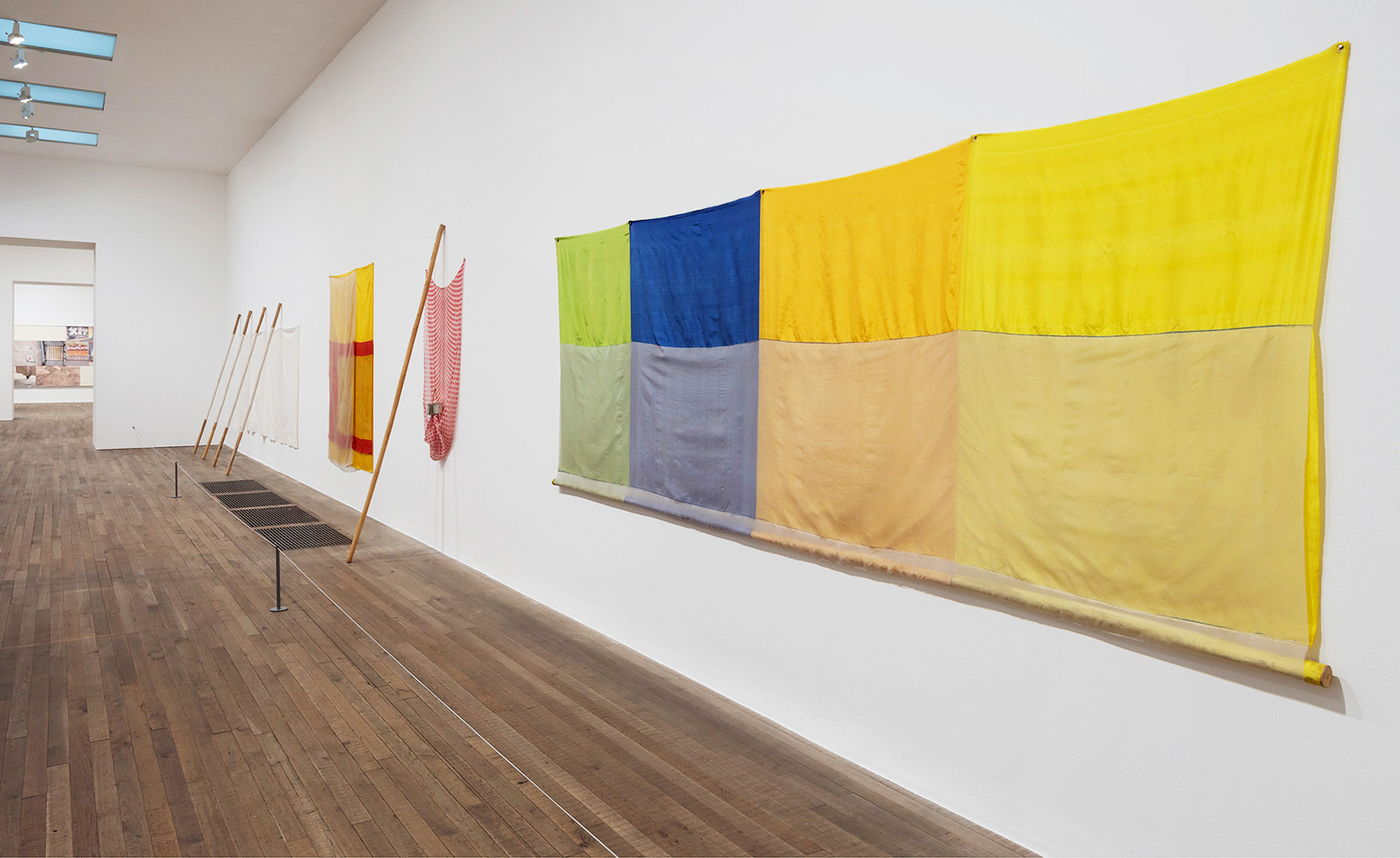
Rauschenberg later experimented with different materials, like great swathes of coloured fabric.
INFORMATION
’Robert Rauschenberg’ is on view until 2 April 2017. For more information, visit the Tate Modern website
ADDRESS
Tate Modern
Bankside
London SE1 9TG
Receive our daily digest of inspiration, escapism and design stories from around the world direct to your inbox.
Elly Parsons is the Digital Editor of Wallpaper*, where she oversees Wallpaper.com and its social platforms. She has been with the brand since 2015 in various roles, spending time as digital writer – specialising in art, technology and contemporary culture – and as deputy digital editor. She was shortlisted for a PPA Award in 2017, has written extensively for many publications, and has contributed to three books. She is a guest lecturer in digital journalism at Goldsmiths University, London, where she also holds a masters degree in creative writing. Now, her main areas of expertise include content strategy, audience engagement, and social media.
-
 The Bombardier Global 8000 flies faster and higher to make the most of your time in the air
The Bombardier Global 8000 flies faster and higher to make the most of your time in the airA wellness machine with wings: Bombardier’s new Global 8000 isn’t quite a spa in the sky, but the Canadian manufacturer reckons its flagship business jet will give your health a boost
-
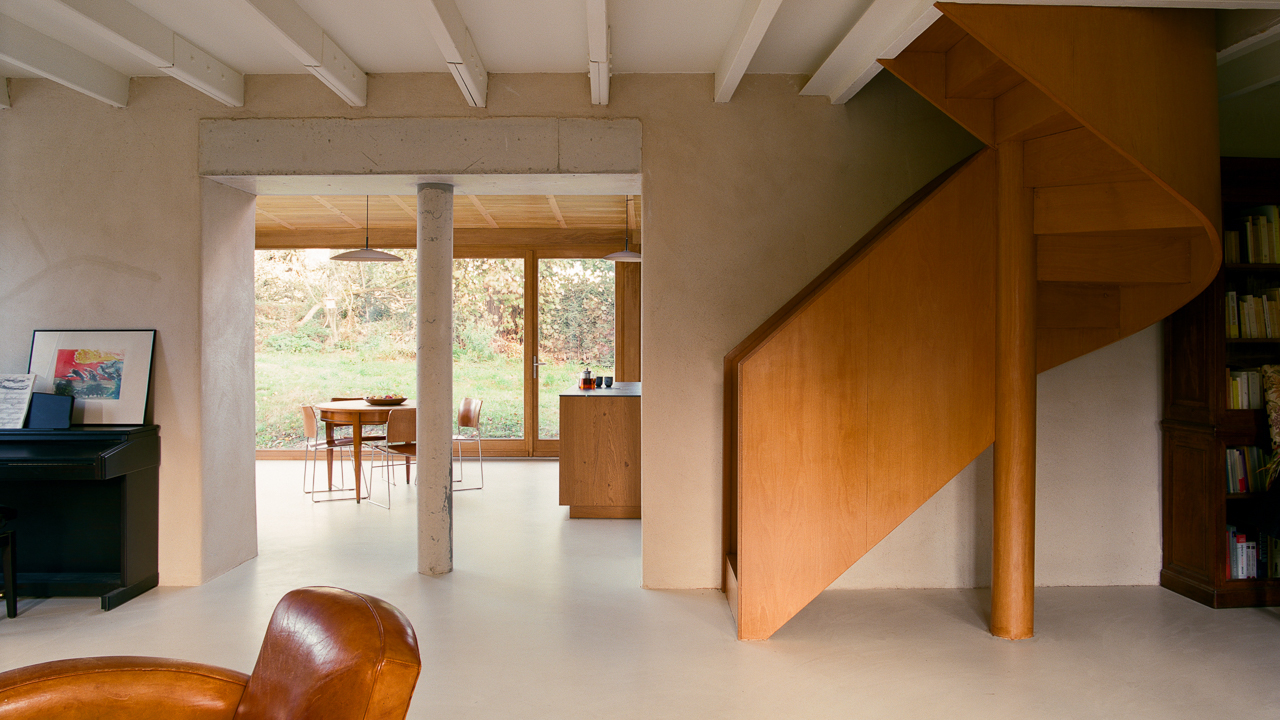 A former fisherman’s cottage in Brittany is transformed by a new timber extension
A former fisherman’s cottage in Brittany is transformed by a new timber extensionParis-based architects A-platz have woven new elements into the stone fabric of this traditional Breton cottage
-
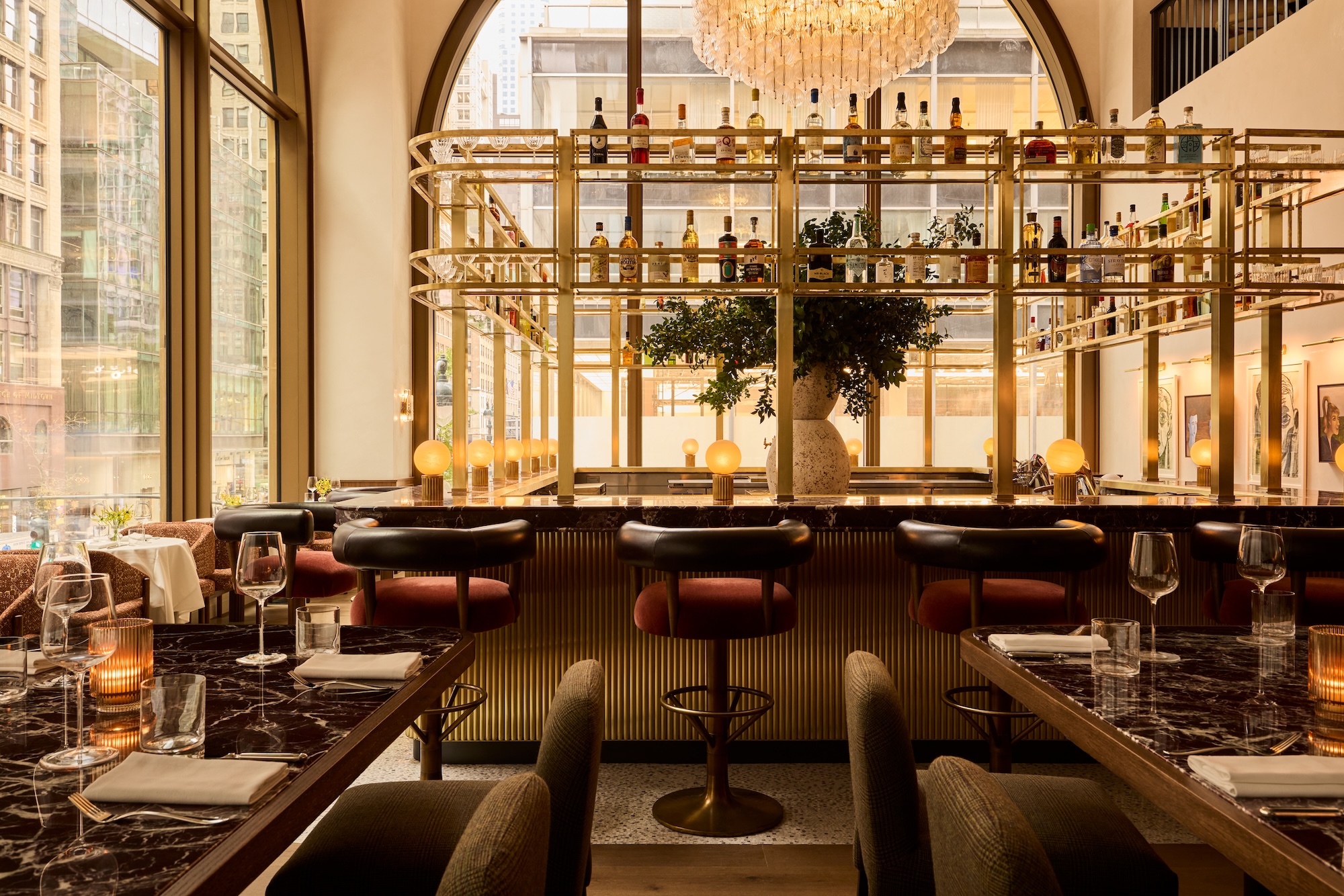 New York's members-only boom shows no sign of stopping – and it's about to get even more niche
New York's members-only boom shows no sign of stopping – and it's about to get even more nicheFrom bathing clubs to listening bars, gatekeeping is back in a big way. Here's what's driving the wave of exclusivity
-
 Out of office: The Wallpaper* editors’ picks of the week
Out of office: The Wallpaper* editors’ picks of the week'Tis the season for eating and drinking, and the Wallpaper* team embraced it wholeheartedly this week. Elsewhere: the best spot in Milan for clothing repairs and outdoor swimming in December
-
 Out of office: The Wallpaper* editors’ picks of the week
Out of office: The Wallpaper* editors’ picks of the weekFar from slowing down for the festive season, the Wallpaper* team is in full swing, hopping from events to openings this week. Sometimes work can feel like play – and we also had time for some festive cocktails and cinematic releases
-
 The Barbican is undergoing a huge revamp. Here’s what we know
The Barbican is undergoing a huge revamp. Here’s what we knowThe Barbican Centre is set to close in June 2028 for a year as part of a huge restoration plan to future-proof the brutalist Grade II-listed site
-
 Out of office: The Wallpaper* editors’ picks of the week
Out of office: The Wallpaper* editors’ picks of the weekIt’s wet, windy and wintry and, this week, the Wallpaper* team craved moments of escape. We found it in memories of the Mediterranean, flavours of Mexico, and immersions in the worlds of music and art
-
 Each mundane object tells a story at Pace’s tribute to the everyday
Each mundane object tells a story at Pace’s tribute to the everydayIn a group exhibition, ‘Monument to the Unimportant’, artists give the seemingly insignificant – from discarded clothes to weeds in cracks – a longer look
-
 Out of office: The Wallpaper* editors’ picks of the week
Out of office: The Wallpaper* editors’ picks of the weekThis week, the Wallpaper* team had its finger on the pulse of architecture, interiors and fashion – while also scooping the latest on the Radiohead reunion and London’s buzziest pizza
-
 Out of office: The Wallpaper* editors’ picks of the week
Out of office: The Wallpaper* editors’ picks of the weekIt’s been a week of escapism: daydreams of Ghana sparked by lively local projects, glimpses of Tokyo on nostalgic film rolls, and a charming foray into the heart of Christmas as the festive season kicks off in earnest
-
 Wes Anderson at the Design Museum celebrates an obsessive attention to detail
Wes Anderson at the Design Museum celebrates an obsessive attention to detail‘Wes Anderson: The Archives’ pays tribute to the American film director’s career – expect props and puppets aplenty in this comprehensive London retrospective